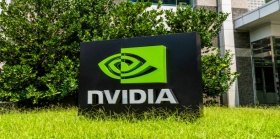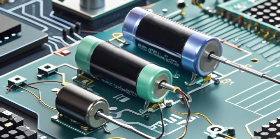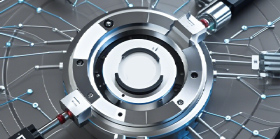This type of material is expected to replace SiC
With the continuous improvement of performance and voltage resistance of power semiconductors, next-generation power semiconductor materials such as silicon carbide (SiC) and gallium nitride (GaN) are receiving increasing attention. Germanium dioxide (GeO2) is expected to become the next generation power semiconductor material after SiC and GaN. It is said that, GeO2 power devices can reduce power loss to one fourth of that of silicon (Si) One tenth of SiC.
What are the possibilities of GeO2? We interviewed Ibi Toyosuke, President and CEO of Patentix, a startup company from Ritsumeikan University that aims to apply GeO2 to practical applications in society, as well as a professor at Ritsumeikan University's Science and Technology Research Institute who serves as the company's co CTO.
Q: There are many materials that have attracted attention for the next generation of power semiconductors. Why are you particularly interested in GeO2?
Jinzi Kentaro (hereinafter referred to as Jinzi): The bandgap of GeO2 exceeds that of SiC and GaN, so high performance can be expected, the substrate cost is relatively low, and it is possible to predict both p-type and n-type conductivity.
The premise is that in the semiconductor field where Si occupies the majority of the market, the current situation is that SiC and GaN have made progress in certain fields in the past 20 to 30 years. However, with the decline in SiC prices, it has become increasingly difficult to profit from it, and companies are starting to look for the next better material than SiC as an initial investment.
There are three important conditions for achieving practical applications: first, the total cost from substrate to device manufacturing must be low; Secondly, the bandgap should be large; Thirdly, it can achieve pn type conductivity simultaneously. Dual PN conduction is a fundamental requirement for manufacturing devices targeting a wide range of markets. Materials that do not meet these three conditions will still be the subject of academic research.

As the next generation of semiconductor materials, many materials have attracted attention, but aluminum gallium nitride (AlGaN), aluminum nitride (AlN), and boron nitride (BN) require expensive substrates, making them difficult to commercialize. People have found that it is theoretically impossible to manufacture P-type semiconductors using gallium oxide (Ga2O3), although it can be used in some fields, its usage speed in the mass market has slowed down. Diamonds can be said to be an "absolute champion" in terms of physical properties, but they have a fatal flaw that they cannot be made into n-type semiconductors.
On the other hand, GeO2 satisfies these three conditions to some extent, although it is not well known, I believe it has enormous potential.
Q: What prompted you to establish Patentix?

Jinzi: After the launch of FLOSFIA, Jinzi confirmed through experiments that it was impossible to produce P-type semiconductors using Ga2O3 as described above, so he turned his attention to GeO2 as a material that could surpass Ga2O3.
At that time, the University of Michigan was also conducting research on GeO2, but the growth rate of the thin film in the study was still relatively low, at 10 nanometers per hour, and the controllability was poor. The rutile structure of GeO2 is the most stable, but it is prone to mixing with amorphous phases, and the gaseous germanium oxide (GeO) in vacuum is prone to desorption, making it difficult to grow thin film crystals.
The 'fog CVD method' that my laboratory is currently researching involves forming a thin film on a substrate in air, which can prevent the detachment of GeO and increase the growth rate. He believed that there were many difficulties in commercializing academic achievements and that caution must be exercised, so he did not initially plan to commercialize them. But when he met Yibi again, he said, 'It sounds interesting, let's give it a try,' and thus established this company.
Ibi Toyosuke (hereinafter referred to as Ibi): Japanese universities have conducted extensive and excellent basic research in semiconductor materials, but this often does not lead to practical applications in society. Due to the high commercial risks, it is difficult for large companies to take on this challenge, so this is the role of startups. There are also many examples of American startups daring to take risks, achieving success in product development and social implementation, and rapidly expanding their global market share, but this situation is not so common in Japan. I originally wanted to achieve this goal through FLOSFIA, but found it difficult, so I tried using Patentix again.
Q: What are the target application areas of GeO2?
Related Information

- 2025.05.12 Intel terminates Deep Link program



